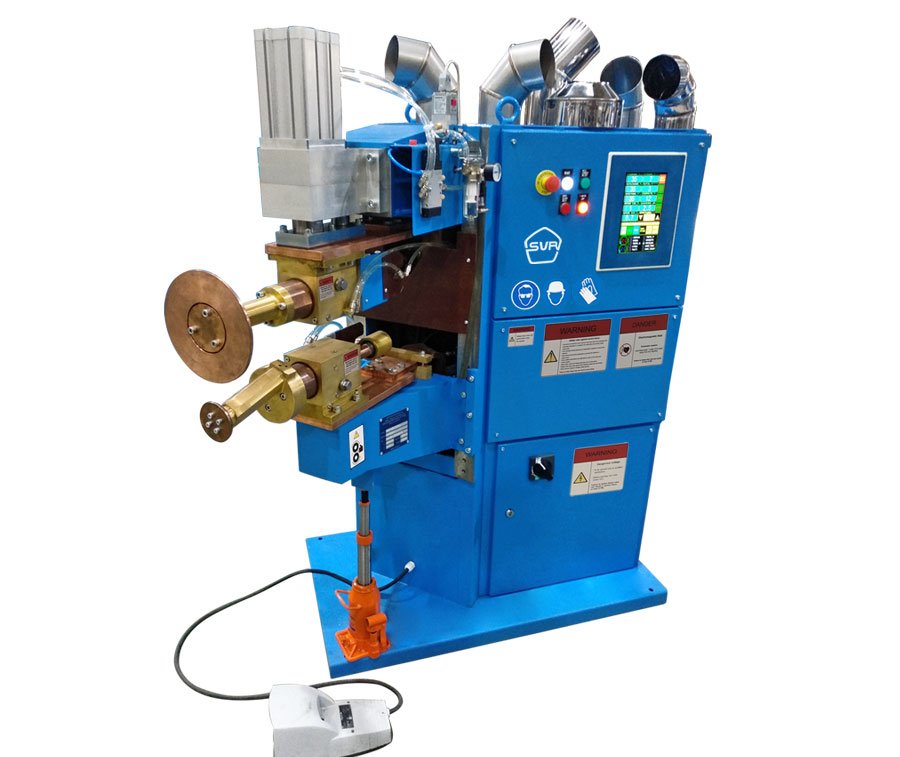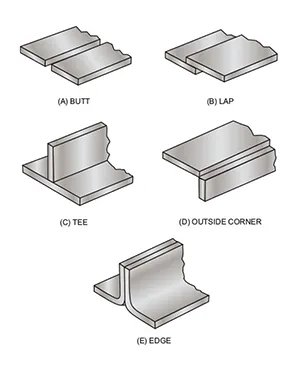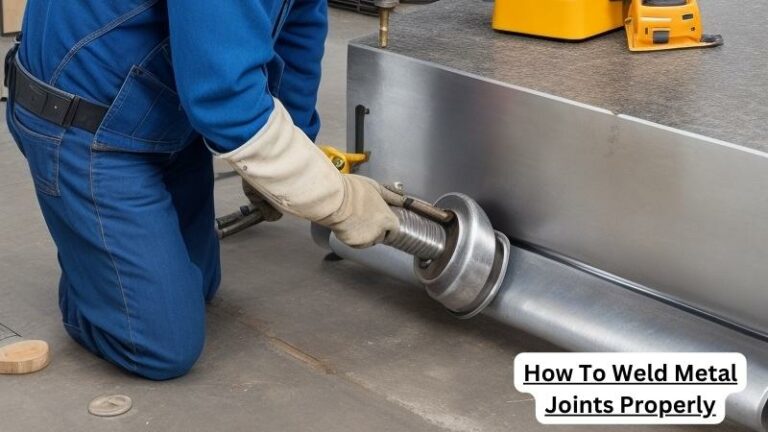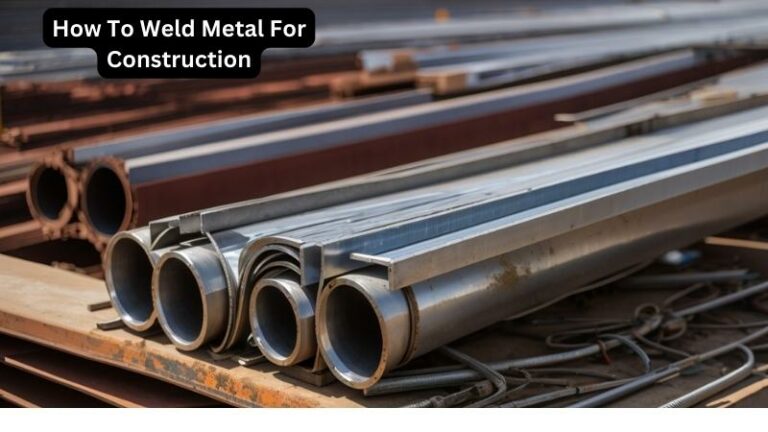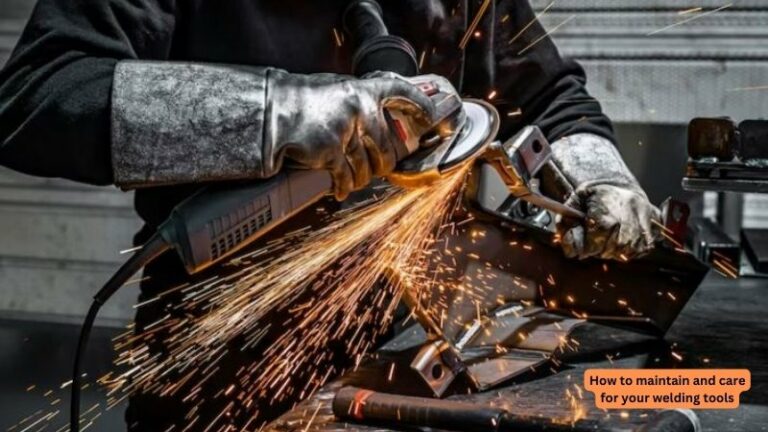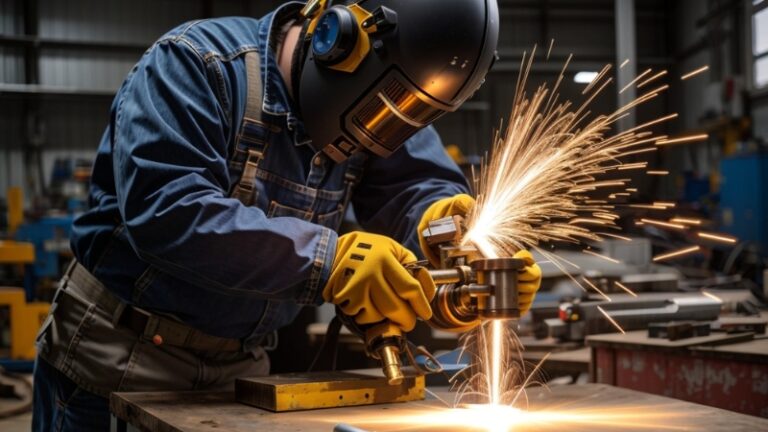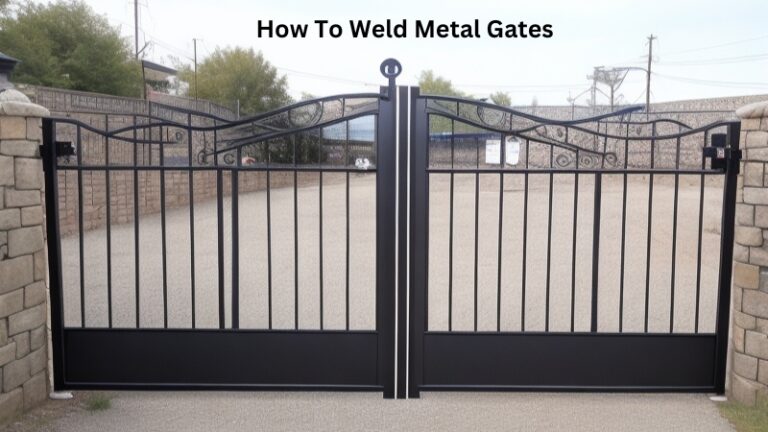How to Weld Horizontal Seams: A Step-By-Step Guide
Wondering how to weld horizontal seams? Look no further. In this article, we’ll guide you through the process step by step, ensuring you have a comprehensive understanding of the technique. Welding horizontal seams can be a challenging task, but with the right approach, you can achieve seamless, strong, and durable results. Whether you’re a beginner or an experienced welder, our practical tips and expert advice will help you master this essential skill. So, let’s dive in and learn how to weld horizontal seams like a pro.
How to Weld Horizontal Seams
Section 1: Understanding Horizontal Seams in Welding
Welding horizontal seams is a crucial skill for any aspiring welder. Horizontal seams refer to welding joints that are positioned horizontally, parallel to the ground or work surface. Understanding the process of welding horizontal seams is essential for fabricating various metal structures, including bridges, pipelines, and buildings.
In this comprehensive guide, we will walk you through the step-by-step process of welding horizontal seams. We will cover the necessary equipment, safety precautions, and techniques needed to achieve strong and durable welds. So, let’s dive in and explore the world of welding horizontal seams!
Section 2: Essential Equipment for Welding Horizontal Seams
Before you start welding horizontal seams, it’s vital to gather the necessary equipment. Having the right tools at your disposal will help you achieve accurate and high-quality welds. Here are the essential tools and equipment you’ll need:
2.1 Welding Machine and Power Source
- Choose a welding machine suitable for the type of metal you’ll be welding. MIG, TIG, or stick welding machines are commonly used for horizontal seam welding.
- Select an appropriate power source based on the welding machine’s specifications and the available power supply.
2.2 Welding Electrodes or Filler Metals
- For MIG welding, use solid wire electrodes that match the base metal.
- TIG welding requires tungsten electrodes, which vary depending on the material being welded.
- Stick welding uses consumable electrodes known as welding rods.
2.3 Protective Gear
- Wear a welding helmet with a proper auto-darkening filter to shield your eyes from harmful UV and infrared radiation.
- Protect your hands with welding gloves made of flame-resistant material.
- Wear a welding jacket or fire-resistant clothing to safeguard your body from sparks and splatter.
- Steel-toed boots are essential to protect your feet from falling objects and potential hazards.
2.4 Welding Clamps and Magnets
- Use welding clamps to secure the workpieces in the correct position during welding.
- Magnetic welding clamps and magnets can be helpful for holding metal pieces together, especially in horizontal welding positions.
2.5 Angle Grinder
- An angle grinder equipped with a grinding wheel or a wire brush is essential for preparing the metal surfaces before welding.
- It helps remove dirt, rust, and mill scale, ensuring proper fusion between the base metal and the weld.
2.6 Welding Table or Workbench
- A sturdy and heat-resistant welding table or workbench provides a stable surface for welding horizontal seams.
- Ensure the table is clean and free from flammable materials to prevent accidents.
Section 3: Safety Precautions for Welding Horizontal Seams
Safety should always be a top priority when welding, and welding horizontal seams is no exception. Take the following precautions to protect yourself and others in the vicinity:
3.1 Personal Protective Equipment (PPE)
- Wear a welding helmet with a proper auto-darkening filter to protect your eyes from intense light.
- Use earplugs or earmuffs to shield your ears from the loud noise during welding.
- Protect your hands with welding gloves to prevent burns and cuts.
- Wear a welding jacket, fire-resistant clothing, and durable boots to safeguard your body against sparks and heat.
3.2 Proper Ventilation
- Ensure the welding area is well-ventilated to dissipate fumes and prevent the accumulation of hazardous gases.
- Use exhaust fans or work in open spaces whenever possible.
- If working indoors, consider using fume extractors or wearing a respirator to protect against harmful fumes.
3.3 Fire Safety Measures
- Keep a fire extinguisher nearby and ensure it is suitable for extinguishing welding-related fires.
- Remove flammable materials from the welding area to prevent accidental fires.
- Have a fire-resistant blanket readily available to smother any sparks or flames.
3.4 Welding Area Preparation
- Clear the work area of clutter and ensure there are no tripping hazards.
- Place warning signs or barriers to prevent unauthorized access to the welding area.
- Secure any loose cables or hoses to avoid tripping or accidental injuries.
Section 4: Techniques for Welding Horizontal Seams
4.1 Joint Preparation
Proper joint preparation is crucial for achieving successful horizontal seam welds. Follow these steps to ensure optimal joint integrity:
- Clean the joint surfaces using an angle grinder, wire brush, or other suitable tools to remove any dirt, rust, or contaminants.
- Bevel the edges of the joint for increased welding penetration and fusion.
- Ensure a proper fit-up, with minimal gaps between the workpieces.
4.2 Welding Techniques
There are several welding techniques commonly used for welding horizontal seams, including:
4.2.1 MIG Welding
- Ensure your MIG welder is set to the appropriate settings for the metal thickness and wire diameter.
- Hold the MIG gun at a 15-30 degree angle and maintain a consistent travel speed.
- Weave the torch in a slight backwards and forwards motion to distribute the heat evenly along the seam.
4.2.2 TIG Welding
- Select the appropriate tungsten electrode and electrode size for the material being welded.
- Hold the TIG torch at a 10-15 degree angle and maintain a steady travel speed.
- Use the foot pedal or thumb control to regulate the welding current and ensure precise heat control.
4.2.3 Stick Welding
- Choose the correct welding rod for the base metal and welding position.
- Maintain a short arc length and a consistent travel speed.
- Weave the electrode slightly to ensure even penetration along the horizontal seam.
Section 5: Troubleshooting Welding Issues
Even with proper techniques and precautions, welding issues can arise. Here are some common problems and their potential solutions:
5.1 Porosity
- Ensure the base metal is clean and free from oil, grease, or moisture.
- Check the gas flow rate and adjust it as per the welding machine’s specifications.
- Review your welding technique, ensuring proper shielding gas coverage and travel speed.
5.2 Lack of Fusion
- Increase the heat input by adjusting the welding machine’s settings.
- Improve joint preparation by beveling the edges for better penetration.
- Consider preheating the metal before welding to promote fusion.
5.3 Cracking
- Evaluate the welding parameters to prevent rapid cooling or excessive heat input.
- Use preheating or post-weld heat treatment techniques to relieve residual stresses.
- Avoid excessive weaving or oscillation, as it can contribute to cracking.
Section 6: Advantages and Applications of Welding Horizontal Seams
6.1 Advantages of Welding Horizontal Seams
- Horizontal seam welds provide structural strength and integrity to metal fabrications.
- They are often more resistant to bending and torsional stresses compared to vertical or overhead welds.
- Horizontal welding positions allow for better control over the molten pool and welding parameters.
6.2 Applications of Horizontal Seam Welding
- Construction of steel bridges and infrastructure.
- Fabrication of pressure vessels and pipelines.
- Manufacturing of large storage tanks and silos.
- Production of structural steel components for buildings and industrial facilities.
The art of welding horizontal seams requires practice, skill, and attention to detail. By following the techniques, safety precautions, and troubleshooting tips outlined in this guide, you’ll be well on your way to mastering horizontal seam welding. Remember to exercise patience, seek continuous improvement, and prioritize safety in all your welding endeavors. Happy welding!
SMAW 7018 Horizontal 2F Tee | Welding Tips & Tricks #Welding #Tutorial #ArcWelding
Frequently Asked Questions
How do I prepare for welding horizontal seams?
Prior to welding horizontal seams, it is crucial to adequately prepare the area. Start by cleaning the surfaces to be welded, removing any dirt, rust, or contaminants. Next, ensure proper alignment and fit-up of the materials to be joined. Use clamps or fixtures to hold the pieces in place, ensuring they are securely positioned. Finally, make sure you have the correct welding equipment, appropriate filler material, and necessary safety gear before beginning the welding process.
What welding technique should I use for horizontal seams?
The most commonly used technique for welding horizontal seams is the horizontal fillet weld. This technique involves joining two materials at a 90-degree angle with a triangular-shaped weld. To create a strong and visually appealing weld, maintain a consistent travel speed, ensuring that the molten metal flows evenly along the joint. As you weld, move systematically along the seam, maintaining a steady arc and carefully controlling the heat input.
What type of welding machine should I use for horizontal seam welding?
When welding horizontal seams, the most suitable welding machine depends on the specific project requirements and materials involved. Generally, MIG (Metal Inert Gas) welding or TIG (Tungsten Inert Gas) welding machines are commonly used. MIG welding is advantageous for its speed and versatility, making it useful for a wide range of materials and thicknesses. TIG welding, on the other hand, provides greater control, making it ideal for precision work and thinner materials.
What safety precautions should I take when welding horizontal seams?
Prioritize safety when welding horizontal seams. Always wear appropriate personal protective equipment (PPE), including a welding helmet with a darkened lens, welding gloves, and flame-resistant clothing. Ensure proper ventilation in the work area to prevent inhalation of fumes. Use welding screens or curtains to protect nearby workers from sparks or UV radiation. Additionally, inspect your equipment regularly, and follow proper electrical safety procedures when working with welding machines.
How do I ensure proper penetration when welding horizontal seams?
To achieve proper penetration when welding horizontal seams, control your travel speed and heat input. Maintain a consistent pace to allow the molten metal to penetrate both surfaces being joined. If the weld pool becomes excessively large or if the weld appears too convex, reduce the heat input or increase the travel speed to improve penetration. It is important to find the right balance to ensure adequate fusion between the materials and achieve a strong and sound weld.
Final Thoughts
In conclusion, mastering the technique of welding horizontal seams is essential for any welding professional or enthusiast. By following the step-by-step process outlined in this article, you can ensure strong and reliable welds on horizontal joints. Remember to properly prepare the workpiece, set the correct parameters on your welding machine, and maintain a steady motion while welding. Implementing safety precautions and practicing on scrap material will help you improve your skills and achieve excellent results. Now that you know how to weld horizontal seams, you can confidently take on various projects and achieve high-quality welds.
